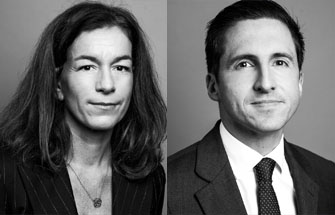In the era of universal banks, artificial intelligence and “one-stop shops” capable of covering all needs, “boutique private banking” may seem to be an obsolete concept.
Nothing could be further from the truth: values such as pragmatism, agility, speed and independence are the foundations of boutique private banking and, at a time when we are surrounded by the industrialisation of services and all things digital, offer a means of placing people, high standards and customization at the heart of the banking relationship.
A boutique private bank is a small private bank that successfully manages the assets of high-worth international clients, by adopting simple values that constitute the strength of a model, which stands out for its customer relations.
Pragmatism seeks to place the client at the heart of the bank’s operations, rather than expecting the client to adapt to the constraints of a multinational organisation that is often too inward-looking.
The model’s agility means that bankers and decision-makers are openminded and have the right listening skills to allow them to identify our clients’ needs and work with them to find the solutions they are looking for.
Speed in decision-making is a decisive factor in the positioning of a boutique private bank – our short decision-making processes mean that we can offer our clients a level of responsiveness that beats the industry average.
The independence of our operations allows us to revive the concept of open architecture without undermining the fundamentals. It means that information can be processed properly and guarantees that the bank’s interests are aligned with those of the client.
Defined by a high degree of client loyalty and low staff turnover, this positioning enables boutique private banks to deliver a first-class, local service. Our managers and private bankers serve a deliberately limited number of ultra-high-net-worth clients, who enjoy outstanding asset management, financing and wealth engineering services.
This also guarantees greater transparency in decision-making and a close relationship with the shareholder, and is synonymous with high standards, objectivity and conviction.
As specialists in bespoke financial management, we have no doubt that aligning investment portfolios with the “mega trends” that will reshape the world over the coming years can deliver performance in the medium term. The companies exposed to these “mega trends” will experience above-average growth.
Climate change, which before the health crisis was a medium-term issue, is today a short-term opportunity for politicians. Europe, China and the United States have all announced Keynesian recovery programmes that are hugely focused on investments in energy transition.
The European Green Deal signed last summer has shifted from a climate plan to the biggest economic recovery measure seen in the EU since the Marshall Plan.
As the digital transformation takes hold, everything is going electric! This electricity will increasingly be produced using renewable energy sources rather than fossil fuels. Renewables are cleaner, and they have also become a cheaper way of generating electricity. In 2020, despite the fact that it was a year hit hard by the pandemic, the amount of electricity generated by renewables increased by 45%. This is a record, but it represents just half of the annual needs required to achieve the Paris Agreement goals. We could therefore see a further acceleration compared with current levels. The International Energy Agency (IEA) estimates that more than US$ 20 trillion will be invested in clean energy by 2040, an average of nearly US$ 1 trillion per year.
In 2021, South Korea and Denmark announced plans to build two of the largest wind farms in history.
However, renewable energy will only provide part of the CO2 reductions required: the circular economy is the other side of this equation.
Currently, we extract resources and transform them into products which we use or consume before discarding them. This linear model generates waste which is unsustainable, including from an economic perspective: 95% of plastic packaging is thrown away after a single use, generating US$ 120 billion per year in waste, much of which ends up in our oceans. Clearly, plastic will not disappear, as it has advantages that must be acknowledged (it is cheap, light and multifunctional), but many companies are investing in research to identify ways to recycle this waste.
The aim is to minimise our use of limited natural resources, which are insufficient for our future growth.
The circular economy is not an advanced recycling process. Recycling of a product begins at the point at which it is to be thrown away. Adding circularity to our economic models involves manufacturing products that are designed to last for several lifecycles thanks to repair, redistribution, refurbishment and/or remanufacturing loops.
Thanks to the circular economy, new sources of revenue are flourishing. We give priority within our portfolios to companies that adopt the circular economy as an economic model. Such companies are more resilient to future economic shocks.
Marie-Hélène Royet, Chief Investment Officer
Thomas Lhuillier, Deputy General Manager & Director for Private Clients






